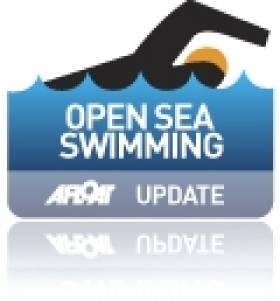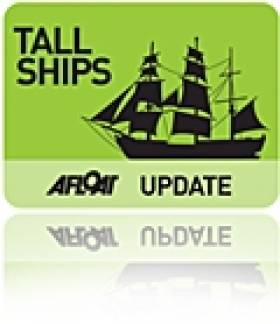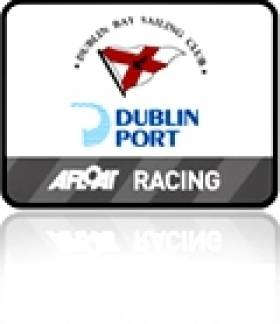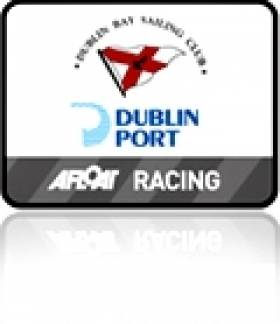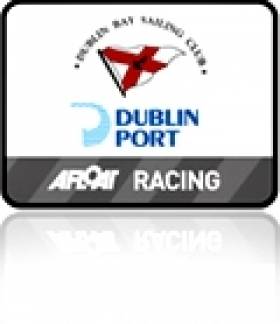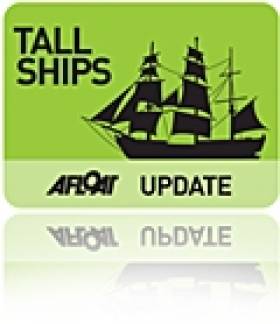Displaying items by tag: Dublin
Dublin's Lord Mayor to Start 91st Liffey Swim
The Swim is open to competitors of all ages, abilities and nationalities, with teenagers pitting their strengths against 70 year olds and club swimmers from all over the country competing against eachother.
There is something for people of all ages to enjoy at the event, with entertainment at the finishline being provided by the Coastguard performing a simulated air-sea rescue, while Dublin Port tug boats, Shackleton and Beaufort, will fire water cannon into the air, accompanied by a colourful Dragon Boat display.
The Lord Mayor says, "the Liffey Swim is unique to Dublin. No European cities run an open swim right through their city centre. I look forward to starting the race and would like to thank Swim Ireland, Leinster Region Open Sea Committee, who do such a great job year after year. Most of all, I would like to thank the swimmers who have trained so hard for this race."
"I encourage everyone in Dublin on Saturday afternoon to follow the gruelling race along the quays and cheer on the swimmers, from the many great vantage points along the Liffey walls, bridges and boardwalks", the Lord Mayor continued."
David Farrell, Leinster Open Sea Committee commented, "We're delighted to be extending this year's race to a 2.4km event, so that it will now be finishing in the Dublin Docklands. We'd also like to gratefully acknowledge the support of Dublin City Council and Dublin Port. This year's race includes a number of Irish swimmers who have completed the gruelling English Channel swim: Julie-Ann Galloway, Lisa Howley, Ann McAdam and Eoin Gaffney."
"With it all to do are the "scratch" swimmers, Colleen Mallon and Julie-Ann Galloway in the women's race, and Shane Drumm, Daire O'Driscoll and Seamus Stacey in the men's race. They are seeded fastest and will have to pass all the swimmers who start before them if they are to win the race. They will wear a unique red hat so they can be spotted as they progress through the field", says Farrell.
30 Boats Expected for Dun Laoghaire Fireball Dinghy Nationals
An initial review of the commitments and promises to contest the Fireball Nationals, hosted by Dun Laoghaire Motor Yacht Club, over the weekend of 26 – 28 August, conducted last Tuesday night after DBSC racing suggests that a fleet in the mid-thirties is possible.
Of course this means that all those people who have had recent contact with Neil Colin about sailing the event will have to deliver on their promises to be there.
In a year when our sailing programme has had to accommodate a two-week Worlds in Sligo, the prospect of a 30+ fleet is very exciting.
Nine races are programmed for the 3 days and Neil Colin, who is wearing two hats – DMYC representative and Fireball Committee member – appears to have all the organisational boxes ticked. The keelboat fraternity also has an event over the same weekend in Dublin Bay – the Cruiser Challenge.
In the Gold fleet there will as always be a queue of teams looking for the podium places. The three regattas sailed thus far this season have each had different winners – Graeme Grant & Francis Rowan in Carlingford, Noel Butler & Stephen Oram in Dun Laoghaire and Simon McGrotty & Ruari Grimes in Ballyholme. However, there are other combinations who have also featured in the 1-2-3 with Barry McCartin/Conor Kinsella getting onto the podium in two of these regattas, Kenny Rumball & Seamus Moore coming good in Belfast Lough, Francis Rowan & Conor taking the Volvo Dun Laoghaire Regatta, Diana Kissane taking a podium place in Dun Laoghaire as well as Andy Boyle.
In Belfast Lough Messrs Bracken & O'Hara were starting to show a return to the sort of form that made them regular occupiers of podium places in the recent past. Louis Smyth has also been showing a good turn of form as well. Frank Miller/Grattan Donnelly took a race win in Belfast Lough and have shown on Tuesday nights in DBSC racing that when they get the "bit between their teeth" they can be just as competitive as anyone.
The Silver fleet racing has also been very good this year and with new combinations coming into the Class as a consequence of the Worlds, there should be good competition in Dun Laoghaire for these combinations. The two Bens – Malone and Scallan showed their mettle in Sligo with the former also taking the Silver fleet prize in Carlingford. Cearbhall Daly & Martina Michels took over that mantle at the Dun Laoghaire event, while Hannah Showell & Margaret Casey won in Ballyholme. Marie Barry has featured strongly in this year's Silver fleet and will be breaking in a new helm for the Nationals! Mary Chambers & Brenda McGuire have upped their game considerably since they embarked on the Silver Fleet training in Killaloe and Dun Laoghaire in 2010, even going so far as to upgrade their boat to make themselves even more competitive. We have also seen some new talent coming into this fleet since the Worlds – new owners of Kenny Rumball's 14962 - who have confirmed their intention to sail the Nationals.
The challenge to those we have been missing this year is to see how they match up to these new combinations. For a variety of reasons, personal and work-related a number of people have been conspicuous by their absence for the circuit this year and that is understandable. The idea behind a Dublin Bay Nationals this year was to improve the accessibility and cost of the Nationals in a year when most people were expected to spend time in Sligo.
The initial assessment of the entry last Tuesday night would appear to suggest that decision has been vindicated.
Norwegian Tall Ship Statsraad Lehmkuhl Sails into Dublin Bay
Dublin will become the final port of call for The Tall Ships Races 2012 presented by Szczecin and orgnaised by Sail Training International, a charity established to harness sail training to develop and educate young people, regardless of nationality, culture, religion, gender or social background.
Cllr. Maria Parodi, Dublin City's Deputy Lord Mayor, who will officially welcome Captain Marcus A. Seidl and his crew to Dublin tomorrow, Friday 19th August said "I am delighted to welcome S/S Statsraad Lehmkuhl and its crew to Dublin. The first Norwegian vessels to sail into Dublin did so many centuries ago and certainly made an impact. We hope the crew will enjoy their short time in Dublin and we hope to welcome them all back here with The Tall Ships Races next August".
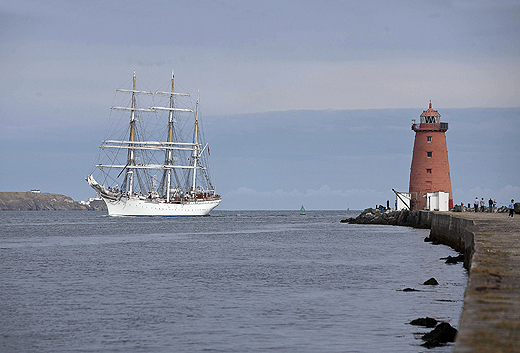
Norwegan Tall Ship Statsraad Lehmkuhl sails into Dublin Bay. Photo: Andres Poveda Photography
Members of the public hoping to get an insight in to life on board a Tall Ship can visit S/S Statsraad Lehmkuhl on Friday 19th August from 12:00 – 16:30 and on Saturday the 20th August from 10:00 – 12:00.
The three masted barque S/S Statsraad Lehmkuhl is one of the world's largest and most beautiful sailing ships. Having served in two World Wars, S/S Statsraad Lehmkuhl, is now in active use as a sail training vessel.
Preparations are under way to ensure a warm welcome is extended to Tall Ships participating in the Tall Ships Race 2012.
From the 23rd to the 26th of August 2012, Dublin will host four days of festival events.
Statsraad Lehmkuhl, a 3-masted steel barque, was built in 1914 as a training ship for the German Merchant Marine. During most of World War I Statsraad Lehmkuhl was used as a stationary training ship in Germany, and after the war was seized as a war prize by England.
The Norwegian government purchased the ship from England in 1921 and she was put into service as a sail training vessel until 1967 except for the period 1940 - 1945, when the Germans confiscated the ship during World War II.
Now owned and operated by a charitable foundation, Statsraad Lehmkuhl has been rented to schools, clubs, companies and other organizations who have used the ship for sail training cruises and shorter trips.
The foundation has facilitated and financed a massive restoration and maintainance program to ensure the preservation of Statsraad Lehmkuhl by active use. She is the oldest and largest square rigged ship in Norway today.
Statsraad Lehmkuhl has a gross tonnage of 1.516 tons and has a sail area of 2.026 square meters distributed between 22 sails. The ship has a diesel engine for propulsion that develops 1125 HP, which gives the ship a speed of up to 11 knots.
Under sail, the ship has gained a speed of more than 18 knots.
Gardaí Renew Appeal for Witnesses to Liffey Death
Dublin Gardaí are still appealing for information on the drowing of a Co Tyrone man in the River Liffey last weekend.
RTÉ News reports that Aiden Mullen, 35, had been socialising in the city after the All-Ireland Football Championship match at Croke Park on Saturday 30 July.
At around 3.20am last Sunday morning, Mullen was waiting with his brother and friends on Burgh Quay for taxis home when he broke away from the group and approached the river wall.
He was last seen falling into the water by his brother, who jumped in to assist him. Both men, as well as three passers-by who entered the water to help, got into difficulty.
Dublin Fire Brigade rescued four from the river, but Mullen's body was discovered shortly after.
Gardaí say a number of witnesses have already come forward, but they would like anyone else with information to contact them at Pearse Street Garda Station.
WOW Makes Her Mark in Breezy DBSC Thursday Race
In a great turnout for the Dublin Bay fleet prior to the August Bank holiday, George Sisk's new J111 WOW chalked up another win in IRC Zero in Cruisers One. Vincent Farrell's Tsunmai was second. Sisk's club mate Colin Byrne from the Royal Irish sailing X-travangance was the IRC winner in the Cruisers one division. The full Dublin Bay DUBLIN PORT Dublin Bay Sailing Club Results for 28 JULY 2011are below:
BENETEAU 31.7 - 1. Levana (Jean Mitton), 2. Prima Nocte (Patrick Burke), 3. Magic (D.O'Sullivan/D.Espey)
BENETEAU 31.7 Echo- 1. Prima Nocte (Patrick Burke), 2. Attitude (D.Owens/T.Milner), 3. Kernach (Eoin O'Driscoll)
CRUISERS 0 - 1. Wow (George Sisk), 2. Tsunami (Vincent Farrell)
CRUISERS 1 - 1. Xtravagance (Colin Byrne), 2. Adrenalin (Joe McDonald), 3. Something Else (J.Hall et al)
CRUISERS 1 Echo - 1. Xtravagance (Colin Byrne), 2. Something Else (J.Hall et al), 3. Jetstream (Peter Redden)
CRUISERS 2 Echo - 1. Peridot (Jim McCann et al), 2. Graduate (D O'Keeffe), 3. White Lotus (Paul Tully)
CRUISERS 2 - 1. Peridot (Jim McCann et al), 2. Graduate (D O'Keeffe), 3. Jawesome 11 (V.Kennedy/M.Dyke)
CRUISERS 3 - 1. Supernova (K.Lawless et al), 2. Upd8 (Whelan/McCabe/Carey), 3. Gung Ho (G & S O'Shea)
CRUISERS 3 Echo - 1. Taiscealai (Brian Richardson et al), 2. Upd8 (Whelan/McCabe/Carey), 3. Supernova (K.Lawless et al)
DRAGON - 1. Diva (R.Johnson/R.Goodbody), 2. Phantom (D.Williams/P.Bowring), 3. Sir Ossis of the River (D Bergin)
FLYING FIFTEEN - 1. Hi Fibre (Michael McCambridge), 2. Flyer (Niall Coleman), 3. Snow White (Frank Burgess)
GLEN - 1. Glenmarissa (F.Elmes/W.Higgins), 2. Glencree (J.Bligh/H.Roche), 3. Glenshane (P Hogan)
RUFFIAN 23 - 1. Ruff N Ready (Ann Kirwan et al), 2. Shannagh (S.Gill/P.MacDiarmada), 3. Paramour (Larry Power et al)
SB3s - 1. Defiant (R.Hudson/J.Hooper), 2. Bom Chickawahwah (John O'Driscoll), 3. Probably (William Riordan)
SHIPMAN - 1. Curraglas (John Masterson), 2. Whiterock (Henry Robinson), 3. Twocan (David Freeman)
SIGMA 33 - 1. White Mischief (Timothy Goodbody), 2. Gwili Two (D.Clarke/P.Maguire), 3. Popje (Ted McCourt)
SQUIB - 1. Pintail (M Muldoon & B Stevens), 2. Little Bird (N Barnwell), 3. Absolutely Fabulous (N Kennedy/P Reilly)
WHITE SAIL CRUISERS Echo - 1. Persistence (C. Broadhead et al), 2. More Mischief (Eamonn Doyle), 3. Xerxes (Dan O'Neill)
WHITE SAIL CRUISERS - 1. Persistence (C. Broadhead et al), 2. Vespucci (S & K O'Regan), 3. Calypso (Howard Knott)
Ireland v the World Match Racing Photos HERE!
Supernova Shines Again on Dublin Bay
Last week's Volvo Dun Laoghaire Regatta overall winner Supernova did it again today on Dublin Bay this time ousting Asterix for Cruisers III IRC honours in the Dublin Port Dublin Bay Sailing Club league.
The Quarter tonner did not win on ECHO though, the Ken Lawless skippered boat lost out to the Club Shamrock Taiscealai (Brian Richardson et al). Full results for 16 JULY are below:
BENETEAU 31.7 Echo- 1. Attitude (D.Owens/T.Milner), 2. Bluefin Two (M & B Bryson), 3. Prospect (Chris Johnston
BENETEAU 31.7 - 1. Prospect (Chris Johnston), 2. Bluefin Two (M & B Bryson), 3. Magic (D.O'Sullivan/D.Espey)
CRUISERS 0 Echo - 1. Tsunami (Vincent Farrell)
CRUISERS 0 - 1. Tsunami (Vincent Farrell), 2. Wow (George Sisk)
CRUISERS 1 Echo - 1. Powder Monkey (C.Moore/M.Byrne), 2. Jura (Barry McCabe), 3. Gringo (Tony Fox)
CRUISERS 1 - 1. Xtravagance (Colin Byrne), 2. Gringo (Tony Fox), 3. Something Else (J.Hall et al)
CRUISERS 2 Echo - 1. Dick Dastardly (B.Cusack et al), 2. Cor Baby (Keith Kiernan et al), 3. Bendemeer (Lindsay Casey Power)
CRUISERS 2 - 1. Jawesome 11 (V.Kennedy/M.Dyke), 2. Dick Dastardly (B.Cusack et al), 3. Bendemeer (Lindsay Casey Power)
CRUISERS 3 - 1. Supernova (K.Lawless et al), 2. Asterix (Counihan/Meredith/Bushell), 3. Taiscealai (Brian Richardson et al)
CRUISERS 3 Echo - 1. Taiscealai (Brian Richardson et al), 2. Saki (Paget McCormack et al), 3. Hyflyer (John Barnard)
FLYING FIFTEEN - 1. Fflogger (Alan Dooley), 2. Deranged (C.Doorly), 3. The Gruffalo (Keith Poole)
RUFFIAN 23 - 1. Alias (D.Meeke/M.McCarthy), 2. Ruff N Ready (Ann Kirwan et al), 3. Ruff Nuff (D & C Mitchell)
SHIPMAN - 1. Gusto (C Heath), 2. Jo Slim (J.Clarke et al), 3. Whiterock (Henry Robinson)
SIGMA 33 - 1. White Mischief (Timothy Goodbody), 2. Gwili Two (D.Clarke/P.Maguire), 3. Leeuwin (H&C Leonard & B Kerr)
SQUIB - 1. Perfection (Jill Fleming), 2. Nimble (Brian O'Hare), 3. Femme Fatale (Joe O'Byrne)
WHITE SAIL CRUISERS Echo - 1. Vespucci (S & K O'Regan), 2. Coumeenole (Bill Kavanagh), 3. Emir Herr (Liam Shanahan)
WHITE SAIL CRUISERS - 1. Vespucci (S & K O'Regan), 2. Act Two (Michael O'Leary et al), 3. Calypso (Howard Knott)
Largest Vessel Transits Samuel Beckett Swing-Bridge
She remained alongside this berth which is normally used by large commercial ships until the vessel sought a berth much closer to the city-centre. This led to a shift of berths in the evening when the 2003 built vessel headed upriver to the Dublin City Moorings facility at Custom House Quay, but this firstly required transiting through two bridges.
With a beam of 10.6m Fortunate Sun entered through the East-Link toll-lift bridge followed by the Samuel Beckett bridge, the Liffey's newest crossing point which opened in late 2009. The €60m bridge was commissioned by Dublin City Council and designed by the Spanish architect engineer Santiago Calatrava. To read more on the bridge click HERE.
Fortunate Sun is registered in the Caymen Islands and is capable of over 17 knots on a range of 5000 nautical miles. She has a steel hull and an aluminium superstructure and interiors also by Tim Heywood Design. In the early hours of tomorrow morning the vessel built by Oceanfast is to depart through the 5,700 tonnes bridge which was delivered by barge after a five-day voyage from Rotterdam.
There has been previous transits of the bridge notably the annual Dublin Rally organised by the the Inland Waterways Association of Ireland (IWAI). This year's Dublin Rally took place on 1 May when boats travelling on the Royal Canal descended via Croke Park and entered the Liffey at Spencer Dock. This required the Iarnrod Éireann bridge-lift and the water level in Spencer Dock to be lowered so to allow safe clearance under the Sheriff St. bridge.
From there the IWAI flotilla made the short passage downriver to re-enter another inland waterway system at the Grand Canal Dock, marking where the Liffey connects with the city's southern canal. The 2011 Dublin Rally was the first time since 1955 that boats could enter Dublin from the Shannon via the Royal Canal and the first time since 2004 that boats also joined from the Royal Canal.
- powerboats
- motorboats
- inland waterways
- Dublin Port
- Dublin
- Grand Canal
- IWAI
- Royal Canal
- DDDA
- Inland Waterways Association of Ireland
- Dublin City Council
- Spencer Dock
- River Liffey
- Ports and Shipping News
- EastLink Toll Bridge
- Dublin Port news
- Grand Canal Dock
- Dublin Docklands Development Authority
- M.Y. Fortunate Sun
- Tim Heywood Design
- Lifffey
- Dublin City Moorings
- Custom House Dock
- Powerboat news
- Motoryachts
- Sir John Rogerson Quay
- Inland Waterways news
- Dublin Rally
- Ianrod Eireann
- Oceanfast
- Scottish Western Isles
Strong Winds Confine DBSC Dinghies to Harbour Course
No sooner had the Dublin Bay Sailing Club (DBSC) dinghy fleet sought the refuge of Dun Laoghaire harbour for tonight's racing than the strong southerly winds that swept the bay abated. Racing however continued in the confines of the harbour, the results (below) showing another win for Frank Hamilton's Dunmoanin' in the IDRA 14 foot class. Second was Sapphire sailed by Lorcan O'Sullivan and third was Jenny Byrne's Doody. In the Fireball dinghy class, Stephen Oram's new boat, the top Irish performer in the Sligo World Championships last month, was the winner in that class. Full DUBLIN PORT Dublin Bay Sailing Club Results for 5 JULY 2011 are below:
BENETEAU 31.7 - 1. Extreme Reality (P.McSwiney/E.O'Rafferty), 2. Attitude (D.Owens/T.Milner)
BENETEAU 31.7 - 1. Extreme Reality (P.McSwiney/E.O'Rafferty), 2. Attitude (D.Owens/T.Milner)
CRUISERS 2 - 1. Borraine (Ean Pugh), 2. Cor Baby (Keith Kiernan et al), 3. Free Spirit (John O'Reilly)
CRUISERS 3 - 1. Chouskikou (R.Sheehan/R.Hickey), 2. Papytoo (M.Walsh/F.Guilfoyle), 3. Wynward (Wyn McCormack)
FIREBALL - 1. nn (S Oram), 2. Licence to Thrill (Louis Smyth), 3. Goodness Gracious (Louise McKenna)
IDRA 14 FOOT - 1. Dunmoanin (Frank Hamilton), 2. Sapphire (Lorcan O'Sullivan), 3. Doody (J.Fitzgerald/J.Byrne)
MERMAID - 1. Jill (P.Smith/P.Mangan), 2. Oonagh (J&M Griffith)
PY CLASS - 1. Evan Dolan (), 2. P Keane (Laser 1), 3. C Arrowsmith (Laser)
Famine Ship Needs €100K to Get Seaworthy
The Jeanie Johnston will need €100,000 to be made seaworthy again, it has emerged.
The three-masted barque - which not long ago sailed across the Atlantic - was missed at the weekend's Tall Ships festival, which attracted half a million visitors to Waterford.
But as the Sunday Independent reports, the ship is currently a stationary tourist attraction at berth in Dublin with her sails in storage.
Hopes are high, however, that the replica famine ship will be made ready as an ocean-going vessel in time for the Volvo Ocean Race in Galway next summer, not to mention the Tall Ships Races in Dublin next August.
"At the moment we are basically putting all the money coming in from the interactive tours, which have been very successful, back into the boat," said ship manager John O'Neill. "We are hopeful we will get the financial assistance we need to get the vessel back out to sea".


























